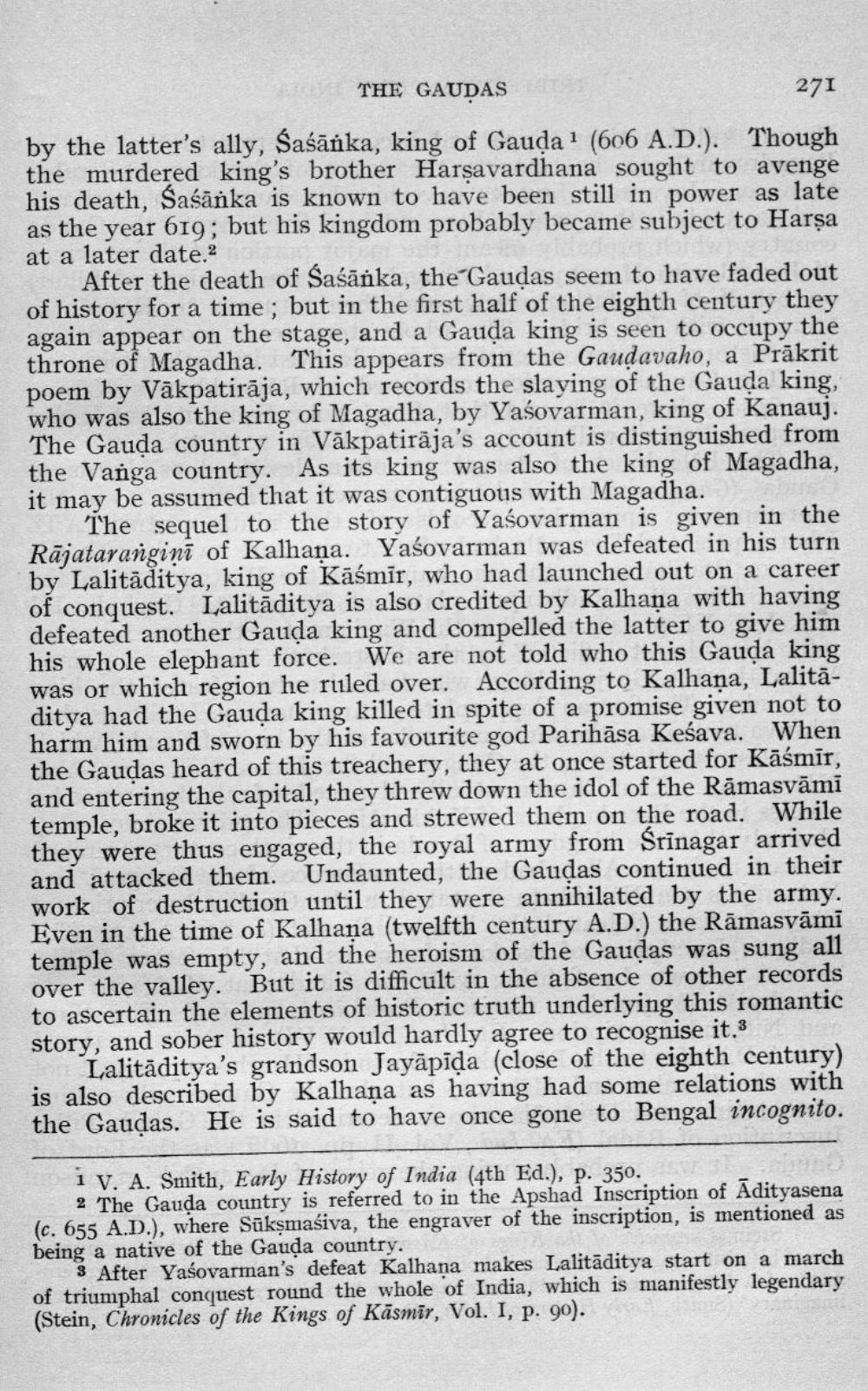________________
THE GAUDAS
271 by the latter's ally, Śaśāňka, king of Gauda 1 (606 A.D.). Though the murdered king's brother Harsavardhana sought to avenge his death, Saśānka is known to have been still in power as late as the year 619; but his kingdom probably became subject to Harsa at a later date.2
After the death of Saśānka, the Gaudas seem to have faded out of history for a time; but in the first half of the eighth century they again appear on the stage, and a Gauda king is seen to occupy the throne of Magadha. This appears from the Gaudavaho, a Prākrit poem by Vākpatirāja, which records the slaying of the Gauda king, who was also the king of Magadha, by Yasovarman, king of Kanauj. The Gauda country in Vākpatirāja's account is distinguished from the Vanga country. As its king was also the king of Magadha, it may be assumed that it was contiguous with Magadha.
The sequel to the story of Yasovarman is given in the Rājataranginī of Kalhaņa. Yašovarman was defeated in his turn by Lalitāditya, king of Kāśmir, who had launched out on a career of conquest. Lalitāditya is also credited by Kalhana with having defeated another Gauda king and compelled the latter to give him his whole elephant force. We are not told who this Gauda king was or which region he ruled over. According to Kalhana, Lalitāditya had the Gauda king killed in spite of a promise given not to harm him and sworn by his favourite god Parihāsa Keśava. When the Gaudas heard of this treachery, they at once started for Kāśmir, and entering the capital, they threw down the idol of the Rāmasvāmi temple, broke it into pieces and strewed them on the road. While they were thus engaged, the royal army from Srinagar arrived and attacked them. Undaunted, the Gaudas continued in their work of destruction until they were annihilated by the army. Even in the time of Kalhaņa (twelfth century A.D.) the Rāmasvāmi temple was empty, and the heroism of the Gaudas was sung all over the valley. But it is difficult in the absence of other records to ascertain the elements of historic truth underlying this romantic story, and sober history would hardly agree to recognise it.3
Lalitāditya's grandson Jayāpīda (close of the eighth century) is also described by Kalhaņa as having had some relations with the Gaudas. He is said to have once gone to Bengal incognito.
1 V. A. Smith. Early History of India (4th Ed.), p. 350.
2 The Gauda country is referred to in the Apshad Inscription of Adityasena (c. 655 A.D.), where Sūksmasiva. the engraver of the inscription, i being a native of the Gauda country.
3 After Yaśovarman's defeat Kalhana makes Lalitāditya start on a march of triumphal conquest round the whole of India, which is manifestly legendary (Stein, Chronicles of the Kings of Kāsmīr, Vol. I, p. 90).




